From the desk of a brilliant weirdo #1:
“What does a project manager really do?”
Maybe that’s a question you’ve been asking yourself or others if you have been considering a PM career for a while.
To be honest, it’s gonna be quite hard to put all the PM roles under one roof as project managers in one industry can differ from PMs in another. But we’ll do our best to give you a clear image of what it looks like to be a project manager.
Without further ado:
What does it mean to be a project manager?
Project managers symbolise the connection between upper management and the working staff (programmers, designers, writers, etc).
More often than not, they operate on various projects, rarely overseeing just one project. Their job is to make sure that the project’s goals are met without over exceeding the set time and budget estimates.
A project manager is someone who communicates with stakeholders involved in the project and working staff to ensure projects are moving smoothly towards the goal line. He manages the team by assigning tasks and prioritising issues.
As a project manager, you’ll be multitasking a lot. Your time and work will be severely interrupted by emails, check-ins, meetings, complaints, help requests, calls, to name a few.
Juggling several different projects at the same time might be rough but that’s why project managers are sought after and can command higher salaries with a few years of experience in their pockets, especially in the IT sector.
You have to be able to communicate deadlines, user stories, requirements, in a clear and cogent way that your team members will have no trouble understanding.
“Every project manager spends a lot of time communicating e.g. preparing status reports, reading and responding to emails, participating in telecoms, attending meetings, etc. It is said that “90% of project managers time goes into project communication.” -Ashwini Rao, Founder of PMexperto.
Whenever it’s crunch time, you need to act tough — push your team but don’t be harsh. They need to know that you are on their side, not against them. They need to feel like you are putting even more effort than they do so the team can stay encouraged and go out of its way to ensure the success of the project.
Whenever you notice a slight problem and say to yourself “Nah, not a big deal,” you are probably making a big mistake.
The thing you neglected earlier will come full circle and bite you in the ass when you least expect it. You should mitigate risks, big or small — and always have a plan B when things don’t go the way you planned.
A good project manager doesn’t necessarily mean that they’ll be able to preserve their productivity or avoid getting pissed off; it means that a good project manager will keep moving forward regardless of the circumstances.
If there’s work that requires your undivided attention, you should figure out time before or after work hours when you aren’t expecting any interruptions.
What makes a good PM is that good PMs are team players. They don’t take credit for their team’s work. Instead, they focus on transforming the project’s goals into implementable tasks with precise instructions the team can follow and execute easily.
“The essence of a project manager’s role is to ensure that all items (including stakeholders) in the project are aligned. Depending on the methodology being used, this could be on a daily basis (for AGILE projects) or weekly basis. Ultimately, it is their job to ensure that those working on the project have full clarity on what is required from them, including briefing, timeframes and communication.” — Simon Ensor, Founder of Catchworks.
Good project managers are also relentless in their pursuit of solutions to difficult problems. You should always be looking for other solutions, different approaches, options for solving a particular problem. Good projects managers should be the main force that drives the team forward.
Here is quite a thrilling definition of being a project manager by Scott Berkun:
“As skeptical as project managers need to be, they are simultaneously optimistic that all problems can be solved if enough intensity and focus are applied. For reasons they themselves cannot fully explain, PMs continually hold a torch up against ambiguity and doubt, and refuse to quit until every possible alternative has been explored. They believe that good thinking wins, and that it takes work to find good thoughts.”
What are the role and responsibilities of a project manager?
The role of the project manager is like the role of an orchestra conductor. Everyone is looking at you, waiting for your instructions. You are acting as a role model in a way.
“A project manager is the cornerstone of both external and internal communication; the gateway of interaction with the customers and with the teams.” — Giulio ZeccaPMP, Founder of innovAchievers.
So, here are the 5 stages of managing a project:
Initiating — During this stage you need to ask heaps of questions in order to get a better understanding of the project you’re developing and how to make it successful.
Questions like:
- What’s the main goal of this project?
- What’s the problem we are solving?
- What is the outcome of solving that problem?
- What does it mean to finish the project successfully? What’s the success criteria?
- Who will take part in the project?
- How are we going to approach the project? What are our assumptions?
- How many resources do we have available?
- Has a similar project been executed before? How did it go?
- In case we miss or forget something, or make a mistake, can we go back and fix it?
Planning — During this phase, you should map out the tasks and milestones for finishing the project. The document you create in this phase should evolve along with the project.
Executing — Once every step is mapped out, the project manager should proceed forward by assigning tasks to the appropriate team members.
Those tasks should be prioritized by importance in case you start running out of time.
You should also restrict the team’s access to any distractions and provide help whenever needed.
Monitoring — During this stage, the project manager should keep a close eye on the team’s performance, time and cost estimates.
Has there been a deterioration, the PM should take precautions and neutralize all present issues.
Closing — Here, you release any leftover resources no longer needed.
Once you review the work done during project development, you can archive project files for future reference and move forward.
To give you a more conventional view of the responsibilities of a PM, here are some of the most common requirements based on project management job descriptions:
- Set the right expectations and coordinate with stakeholders.
- Manage multiple projects at a time.
- Assemble a detailed plan where you can track the team’s progress during project development.
- Act as a team leader and motivate your team members to put in the hard work and finish the project successfully.
- Prioritize tasks so you know you’ve finished the most important tasks first even if you run out of time.
- Continuously upgrade the project documentation so everybody can stay up to date.
- Communicate clearly and partner with other departments to bring everybody on the same page.
- Convey task instructions to your team members clearly and concisely.
- Track your team’s work time and maintain daily time and worksheets.
- Communicate project issues to upper management when necessary.
- Conduct daily stand up meetings.
- Conduct retrospective meetings to assess team efforts after project completion.
- Have a good understanding of KPIs (key performance indicators) so you know the direction your project is headed towards.
- Have a good understanding of managing budgets.
- Use the right project management tools to ensure the workflow is smooth.
“Basically, I have a job because many leaders are disorganized, can’t work technology, and don’t know how to communicate with other humans. I’m the one who makes sure the deliverables leave the brains, laptops, and desks of employees, and reach the hands of the client.” — Ariadne, Project Manager at Mermaid Consulting.
Project management skills & qualifications
Project managers should possess a prowess of impressive social skills.
As someone who is in constant communication with a number of people, project management roles are predominantly occupied by extroverts.
By no means you should decline a PM role as an introvert, especially if you have a passion for the job.
According to Scott Berkun, project managers should have the ability to think critically.
Diagrams and flowcharts can be quite useful when it comes to assessing the project’s state. Such charts and diagrams consist of work items and shows where bottlenecks might appear. “For example, if features A, B, and C can’t be completed until D is done, then D is on the critical path for that part of the project. This is important because if D is delayed or done poorly, it will seriously impact the completion of work items A, B, and C.” — says Scott.
Here are some project management traits:
- Knowing the business model and requirements inside out in order to propose optimal solutions for tackling projects.
- Being accountable and instilling accountability in the team as well.
- Leadership skills — thinking about the team first not themselves.
- Critical thinking.
- Thriving in chaotic environments. A project manager should remain calm while searching for the best solution to a hectic situation.
- Ability to document data clearly and concisely that won’t make other people gawk at the docs they’ve composed.
- Great at breaking down complex resources into easily-understandable chunks of information that will allow the team to hit the ground running in no time.
- A sense of organisation. Multi-tasking shouldn’t be a huge problem for them.
- A twinge of creativity never hurts.
- Being able to analyse their team’s performance and suggest optimisations.
- Being able to manage their time efficiently is one of the top skills that makes project managers successful.
- A bit of self-motivation is always useful.
- And finally, a decent work ethic — because nothing really happens without hard work.
“The best project managers are leaders in their own right — regardless of their title or where they sit in the org chart. In fact, leadership is so essential to successful project management that I believe we should change the job title to ‘Project Leader.’” — Annmarie, Founder/Consultant at Newgrange IT Consulting.
To be able to qualify as a project manager, you’ll need to have passed some kind of formal project management training.
Experience as a project management intern would add bonus points to your resume.
Generally, most companies are looking for PMs who have 3 years of experience in the role.
But as a starter, you probably won’t have years of experience. Therefore, having a PMP certification is highly valued among recruiters when scouting for project managers. A certified project manager will, obviously, rank higher than a project manager without a degree.
How to be a project manager (a successful one)?
One of the best ways of getting into project management is by getting a mentor.
Finding someone who is in the place you want to be 10 years from now and modelling their steps is perhaps the best thing you can do to ensure you become a master at the craft. A good place you can search for a mentor is LinkedIn.
We should note that being a project manager isn’t meant for everybody.
“We’re always the ones who come under heat if things fall apart, but that’s because we’re also the ones holding it together in terms of the bigger picture.” — Rex, CEO of Gadget Review.
It’s a profession suited for those who are accountable, can easily adapt to changing circumstances, think strategically, are decisive, and have a stress-proof personality that allows them to thrive even in chaotic environments.
When things go shitty, as Birmingham people like to say, you have to start considering the time and cost-effective options for saving the project.
Start looking at what an MVP (Minimum Viable Product) would look like, especially when deadlines are approaching.
In such a situation, go back to the backlog and check whether the most important tasks are completed for the project to at least run on life support.
“Walk the walk, if you want people to deliver on time, you need to do the same thing. Don’t use bromides, or sloganeering to encourage the team, when the situation looks bad, recognize that, don’t resort to management speak softening the situation to the point where nobody knows what is happening.” — Jon M Quigley, Value Transformation.
After the project ends, conduct a retrospective meeting, and try to figure out what went to hell and how you can avoid it from happening again.
Be careful when using the word “minimum” when communicating with stakeholders tho. It can sometimes scare them.
As a project manager, you also ought to convince your team why the work they’re doing is important and prioritised the way it is.
Otherwise, some team members might think something else is crucial than the work you are providing which results in team disparity. You have to provide facts and hard evidence to your team so that everybody is on the same page, synchronised, seeing clearly what’s the next step ahead of them.
Don’t try to act as an authority figure because you’ll ruin the relationship with your team and they will more or less deplore you.
A good tactic to build a relationship with your team is to be a listener and ask questions while keeping the attitude of a student. If something doesn’t make sense, questions you may ask are: “I hear you. Can you elaborate a bit more on what caused this problem to happen and if there is anything we can do to fix it?”
According to developers and other working staff, the PMs who impress them most are the ones who ask enough questions to figure out why things aren’t progressing according to plan and what reasonable actions the team can take in order to fix that.
Most importantly, a PM should be able to express empathy and understanding towards their team.
“As a project manager myself, what makes me highly effective is when proper coordination is managed. I introduced a process called time audit. It involves my staff writing down their intentions and views on how they’ve spent their time in the office and then tracking how they actually work. We notice that there’s a significant difference between what they intend to do and the real actions they’ve taken.” — Michael Hammelburger, CEO @ Expense Reduction Group.
How to get a project manager degree?
Becoming a project manager starts with educating yourself.
“If you’re looking to break into project management, you first want to pursue a certification based on your career goals. The most common certifications include PMI PMP, PMI ACP, Prince2, Agile Scrum Master, and Scrum Product Owner. I recommend acquiring more than one certification to improve your hireability chances and rise above the competition.” — Bart Turczynski, Editor-in-Chief at ResumeLab.
Obtaining a PMP certificate would be best for impressing companies. Or, if you have the time, you can get yourself a Bachelor’s in project management.
For improving your skills and putting yourself ahead of the competition, a good book to make your library is “Making Things Happen” by Scott Berkun.
Or you can also apply for a project management internship. If you are lucky, the company may provide you with internal project management programs/courses and offer you a long-term contract.
You’ll probably start as a junior project manager or some kind of an associate PMs mainly assisting the senior project manager. You’ll be able to learn a great deal about the job from the senior PM you are closely working with, and thus be able to dive into the profession immediately.
Of course, your salary as a junior project management will be quite lower than a senior but at this stage you should aim to absorb as much knowledge as you can rather than shouting for a short-term pay boost.
You can check the following websites for acquiring an online project management degree: edX, Alison, Coursera, Simplilearn, Udemy.
Project management salaries
According to Glassdoor, the average salary for a project manager in the US sums up to $66,137/yr. The estimate is based on 133,345 salaries submitted anonymously to Glassdoor by Project Managers.
Additional cash compensation is also available and it can make somewhere from $1,500 to $20,000.
Project management careers
“Are project managers going to be in demand in a couple of years?” — this question has probably crossed your mind more than once if you have been considering a PM career.
By 2027, 87.7 million individuals will be working in project-oriented roles. And 71% of global organizations will have roles related to project management.
According to the Project Management Institute, 22 million new PM jobs will be opened by 2027 (growing nearly 33% from 2017).
As a project manager you’ll be spoilt for choice being able to join a variety of industries.
Project managers are most known to inhabit roles in the IT space, but you can also immerse yourself in other industries such as finance, insurance, construction, engineering, manufacturing, and others.
Here are different types of project managers:
Construction
Construction project managers are in the top 3 sought after project managers.
They can be responsible for managing the construction of shopping centres or overseeing the execution of new downtown infrastructure.
Construction managers work closely with clients, architects, engineers, and other 3rd party vendors to complete their projects successfully.
The average salary of a construction manager in the US is about $76,892/yr.
Engineering
Variety of companies use engineers for the development of new products in a faster, safer, and hopefully, cheaper way.
It’s the engineering project manager’s job to keep close communication with the engineers and manage the project resources efficiently.
Just like any other project manager, engineering PMs keep track of deadlines and guide the team whenever help is needed so the project can be completed successfully.
The average salary for an engineering project manager in the US is about $93,530/yr.
Software Development
As a software project manager it’s highly preferred to have a technical background.
Once you get to understand the client’s desires, you can then create a robust plan and a list of tasks/user stories for the team to strictly follow.
Software project managers also keep track of time and budget estimates.
The average salary for a software project manager in the US is about $89,256/yr.
Information Technology (IT)
It’s a nice extra for IT PMs to have technical experience but what’s more essential is to possess the business acumen to make better time and budget-related decisions.
Except for managing their team, IT project managers also work closely with other departments and 3rd party vendors to ensure the project’s success.
IT project managers command an average salary of $88,822/yr.
Healthcare
Healthcare is another growing industry that’s welcoming more and more new project management roles.
The average salary of a healthcare project manager in the US is about $66,137/yr.
Project managers in this field can be responsible for overseeing the opening of a new hospital facility or wing.
They also collaborate closely with doctors, donors, board members, other departments, and 3rd party vendors.
Marketing
When it comes to marketing project management, you can be responsible for anything from SEO and organic traffic to paid ads, etc.
You’ll have to manage a team of copywriters, designers, and other working staff while keeping upper management involved in the process at the same time to ensure your projects end with success.
The average salary of a marketing project manager in the US is about $62,225/yr.
Consulting
Sometimes, organizations need extra help with managing and developing a project. That’s where consulting project managers come in hand.
They are valuable because they bring a set of business and social skills to the table.
Consulting project managers can serve a variety of industries and their job is quite similar to the typical project manager — come up with a plan and document it, oversee implementation of tasks, monitor and track progress, etc.
The salary of a consulting project manager depends on the project they are hired for.
What does a project manager do on a daily basis?
Communicating with team members: Well, project managers are around the clock communicating with their team and other departments and stakeholders.
They are constantly shuffling through emails, chats, calls, daily stand ups, and other team meetings.
Honestly, on the outside, their work schedule might seem quite hectic. But that’s the beauty of it — project managers are still able to manage their projects even though their world might look upside down to the other people.
“I absolutely adore my job, team, and the clients I work with. As a part of my day-to-day activities, I do standups for multiple teams (separately for marketing and 2 development teams), communicate with clients by phone, chat, email and in-person, and keep track of the scheduled tasks.” — Olha Putintseva, Project Manager at BlastSourcing.
Issue identification and resolution: It’s quite common for project managers to stumble upon various issues during project development.
Some of these problems come in the shape of budget, resource allocation, and miscellaneous issues, to name a few.
The job of the project manager, obviously, is to discover cost-effective and time-efficient solutions to the present problem.
Budgeting: Cost estimations can also be involved in the daily activities of a project manager, especially when it comes down to large-scale projects.
Larger budgets require your undivided attention so you don’t make any mistakes that may cost your organization dearly.
Budget daily activities include reviewing, processing, and approving internal and external invoices when it comes to 3-rd party partnerships.
Time management and approval: Many project managers use useful apps like timesheets to manage how they spend their own and team’s time.
Team-building: A project manager should keep its team happy and motivated daily so everybody can be productive 24/7.
Team-building exercises are a great way to keep your team motivated, stimulated, and ready to rock n’ roll when new challenges appear.
“As a project manager, in addition to planning, assigning, and scheduling tasks needed to get a project finished, one of my top tasks is just checking in on everyone involved in the projects to make sure they are on track to meet their due dates.” — Jesse Silkoff, founder of MyRoofingPal.
Seeking new information and ideas by discussing the project with others can also be included in your daily checklist.
Once the ordered list of tasks is perfected you can proceed further to assigning tasks to your teammates. From there on, you have to make sure every single individual on your team follows their tasks as described to ensure the project is moving smoothly towards the goal line.
It’d be really detrimental to the project’s success if you provide your teammates with a chaotic backlog lacking any order whatsoever.
Putting aside that it’ll baffle your team, everybody will start working on tasks they think are most important meaning nobody will be on the same page.
And when you’re running out of time, your team won’t be able to produce an MVP.
It’s essential to prioritize tasks.
No matter what happens, you’ll have done the most essential work first and thus be able to make slight alterations and adjustments moving forward. You won’t have to go back and revise things you’ve already done.
There are also ways that allow you to manage your tasks in your ordered list.
For example, you can have items in Priority 1 list. Those are the items your project will die without. These items aren’t simply things that would be nice to have.
Here’s an example with car construction:
The priority 1 items would include the engine, tires, transmission, brakes, steering wheel, and pedals. The car can’t run without these.
And then you have Priority 2 items such as the doors, windshield, AC, and radio, to name a few.
Even though it may seem incredibly inconvenient to drive a car without some of the Priority 2 items, the car can still run only with Priority 1 items.
That’s the approach you need to have when managing projects. If you are running out of time but have completed all Priority 1 items, you can still ship the product although in a minimal condition. Otherwise, you won’t be able to ship at all.
And as we are speaking of prioritizing lists, if you can’t so NO, you can’t really manage a project.
“That’s one side effect of having priorities” — according to Scott Berkun.
You’ll probably be bombarded with ideas from your team and others. You should probably reject most of them. Remember, if you can’t so NO (without shouting of course), you can’t really call yourself a PM.
Credits to Scott Berkun and his book “How To Make Things Happen.” https://scottberkun.com/2012/how-to-make-things-happen/
“I recently designed and oversaw the launch of more than 200 resume examples that I posted on the Zipjob blog! My team of professional resume writers wrote how to guides for the most popular job titles…including project management specialists. We included top skills, work experience samples, and tons of tips” — Caitlin, Project Manager at Zipjob.
The difference between a program and project manager
To put it simply, a program manager is responsible for all projects in a certain department, whereas a project manager oversees just one or a few.
Let’s get down to brass tacks.
Direction
Program managers keep things in a high-level view (defines time and budget for projects) whereas project managers adhere to the time and budget estimates set by the program manager.
Project managers then come up with a priority list that the team should follow when developing the project.
Roadmaps
The program manager assembles a roadmap visualising all the projects that need to be completed across a set period of time.
The project manager, on the other hand, creates a project roadmap with all the tasks, user stories, and dependencies that need to be completed for the project to be finished successfully.
A project roadmap also allows the project manager to monitor the team progress, identify and prevent issues before they occur.
Areas of responsibility
The program manager is all about achieving the company’s goals whereas the project manager is about completing the project successfully.
A good program manager knows how to efficiently collaborate with their project managers to define best practices and streamline workflows.
A good program manager is familiar with how to effectively communicate with customers to find out what they really want.
A good project manager strives to deliver projects on time without exceeding the assigned budgets.
Metrics
When it comes to KPIs and metrics, project managers track and document the ROI of their individual projects and report to the program manager.
A program manager then develops new time and cost estimates based on the performance of previous projects.
Salaries
We’ve already mentioned the average pay of a project manager (about $67,000/yr). The program manager salary can vary, but all in all, the average is around $60,000/yr according to Glassdoor.
The best project management tools
“Use a tool to organize and manage your projects. It would keep everything streamlined and help you stay on top of things.” — Hamna Amjad, Project Manager at Heart Water.
Codegiant
Codegiant is a specifically designed project management tool not to overwhelm you with heaps of features but delight you with its simplicity and intuitive interface.
For one, Codegiant allows you to create tasks within just a few clicks and assign them to your teammates quickly.
And for two, Codegiant features beautifully-designed roadmaps so you can see the progress being made, identify and prevent bottlenecks before they happen.
If you are either a fan of Scrum or Kanban, Codegiant comes with both.
NOTE: Codegiant also comes with git repositories and built-in CI/CD. It makes a good suite of development tools.
Features:
- Get rid of chaotic backlogs with Codegiant’s intuitive interface.
- Kanban and Scrum boards.
- Roadmaps.
- Sprints.
- Epics.
- Keep track of progress.
- Tasks and subtasks.
- Tags, mentions, and comments.
- Time estimates.
- Jira importer.
- Docs & notes.
- Codegiant has a free plan for up to 5 users, then starts at $3/user a month.
Pros:
- Make your team more productive by prioritising tasks clearly and explicitly.
- Sync with your team and accelerate product development with tags, mentions, and comments.
- Risk-free — play with it, see if it suits you, pay absolutely nothing. Free forever for up to 5 team members.
Cons:
- More integrations need to be added.
- Customer support may take a while to respond sometimes.
ClickUp
ClickUp, on the other side, brings tons of features to the table. That’s why it markets itself as “The one tool to rule them all.”
ClickUp recently raised $35 million in Series A meaning they’ll be further improving their product and adding new features as well.
ClickUp features an importer tool making the importing process fast & easy.
Moreover, it boasts over 1,000 integrations. You can connect ClickUp with your favourite tools to grease the skids for your workflow.
Features:
- To-do lists.
- Docs & notes.
- Spreadsheets.
- Email & chat.
- Events.
- Reminders.
- Time tracking.
- Screenshots & recording.
- Resource management.
- Epics.
- User stories.
- Analytics.
- Use tags.
- Templates and custom statuses for process management.
- Boards, Lists, Gantt, and Calendar views.
- Start and due dates.
- Free plan. After that starts at $9 per month.
Pros:
- You’ll rarely find yourself in a dire need for more features. ClickUp’s main strength is that it brings heaps of features to the table.
- ClickUp delivers a well-explained onboarding process and the support team is completely dedicated to solving any issues that may be hampering your work process.
- You can use ClickUp completely free of risk. It offers a free plan.
Cons:
- It’s not really the simplest tool out there according to customer reviews on TrustRadius. Creating tasks and working in multiple layouts can be overwhelming at the beginning.
Asana
Founded by one of Facebook co-founders (Dustin Moskovitz) back in 2008, Asana boasts a straightforward UI/UX with enough features to move your project from “rough” to “finished” state without much hassle.
Boasting more than 100 integrations, Asana brings everything you need in one place — emails, files, tickets, and many more.
If you are a creative person then Asana is definitely the tool for you. Asana features fascinating rainbow unicorns appearing only after you complete a task.
Features:
- Simple interface.
- Document management.
- Gantt charts (Timelines).
- Reports.
- Notifications.
- Reminders.
- Comments.
- Add assignees, attachments, and hearts to tasks.
- Time tracking.
- 100+ integrations.
- Portfolio management.
- It comes with a free plan for up to 15 users. It then starts at €13.49 billed monthly.
Pros:
- If you are a fan of rainbow unicorns, go with Asana.
- Once you get used to it, managing your projects inside Asana feels like a breeze due to its simple and intuitive design.
- It comes with a free plan allowing you to explore the app without risking a penny.
Cons:
- Email notifications can be exasperating at times and hard to disable.
- Sometimes it can get really clunky. Loading external links to Asana tasks can take more than 30 seconds.
- Asana can be quite expensive when you want access to all the premium features. The premium plan is priced at $13.49/user per month.
Trello
Why a multitude of people so adore Trello is because it helps you visualise your project progress clearly. It’s definitely one of the simplest PM tools out there.
Trello allows you to prioritise your tasks quickly so your team explicitly knows what’s the next step ahead of you. Trello is suitable for business and personal use as well.
Moreover, you can automate tedious tasks with Butler to soar your productivity levels. You can automate rule-based triggers, custom card & board buttons, calendar commands, and due date commands.
Features:
- Create cards.
- Add comments.
- Upload file attachments.
- Checklists.
- Labels.
- Search.
- Filters.
- Due dates.
- Drag and drop.
- Discussions.
- Notifications.
- Emojis.
- Mobile versions.
- Trello pricing plans at $12.50 per user per month.
Pros:
- Trello is simple to use and loads fast. Adding information and creating tasks happens at cat’s speed.
- Keeping your team on the same page with Trello is quite effortless as well. You can tag and assign tasks to your teammates easily while changing the colors of your cards to see the project progress clearly.
Cons:
- Scaling the boards in Trello is quite hard. You won’t be able to keep track of every single task on your boards.
- Except for the free version, the Business and Enterprise plans don’t offer free trials which makes it difficult to assess the premium features. -The mobile app interface can be quite wearisome. Customers have complained from losing their chats & messages.
Basecamp
Basecamp is almost as old as I am. It’s one of the well-known tools in the PM industry.
Basecamp is definitely a bit different than other apps meaning it brings tons of personality to the table. You feel like you are talking to a human when reading through their website.
It’s quite a straightforward tool — you can break down tasks into smaller chunks, organize and prioritize your lists, and keep your team on the same page.
Features:
- To-do lists.
- Add notes and file attachments.
- Comment directly on tasks and lists.
- Basecamp Hill Charts.
- Message boards.
- Embed images and files.
- Add events with dates, times, and date ranges.
- Notifications.
- Drag and drop.
- Reorder and color code files.
- Assign tasks.
- Due dates.
- Schedules.
- Share documents, files, and images.
- Real-time group chat.
- Pings.
- Mentions.
- Attach files, quotes, and code samples.
- Keep everything private until you choose to share.
- Reports.
- Automatic check-ins.
Pros:
- The support team is willing to go out of its way to grease the skids for your work process.
- It’s super affordable especially for larger teams and organizations.
- Basecamp is very flexible meaning you can adjust it to your workflow without any hassle whatsoever.
Cons:
- In the beginning, it may be hard to get a sense of it as it boasts oodles of features. It can be a bit overwhelming.
- Coordinating with other department teams can be quite hard. You only have one message board and chat.
Jira
Initially built for developers, Jira is now the most popular project management tool among developers. However, due to its initial bug tracking design it can be hard for non-tech folks to comprehend Jira.
Jira’s features can be a bit frustrating at first, but once you get going, you’ll be able to bring your team on the same page and accelerate your development much faster than you would with other PM tools.
Jira is available in three versions — Jira Align, Jira Core, and Jira Software. Jira Align is mainly suited for enterprises, whereas Jira Core and Jira Software fit smaller businesses better.
Features:
- Customizable Jira workflows.
- Unlimited custom fields.
- Bugs and defect management.
- Jira swimlanes.
- Search and filtering.
- Multiple assignees.
- Customizable Jira boards and wallboards.
- Jira Kanban, Scrum and Scrumban boards.
- Easily import data from other systems.
- Mobile interface available for both Android and iOS users.
- Jira supports the following platforms: Microsoft Windows, Linux, Mac OS X, Amazon Web Services (AWS), Microsoft Azure.
- Jira is free for students. You only need the Atlassian Classroom License.
- Free for open-source projects and teams with up to 10 users.
Pros:
- Jira is perfect for development teams. It boasts tons of fantastic features. The main strength of Jira is that it features many great features for anything related to project management.
- Jira integrates seamlessly with tons of other great tools to make your work life simpler and more enjoyable.
Cons:
-Initially, it can be hard to get the whole picture. The heaps of features will probably overwhelm you and the UI may seem a bit clunky.
-Due to its bug-tracking design, it’s not the best PM tool for non-tech folks.
Conclusion
Being a project manager is definitely not an easy task.
The best way to become one is to obtain a PMP certification and apply for entry level project management positions to get a few years of experience on your back, and command higher salaries as time goes on.
As a project manager, no day will be the same. You’ll be juggling several projects at a time. And your daily schedule might be quite hectic at times. But that’s the beauty of it. If you are dedicated, you’ll get there.
Stay unparalleled,

![Cover image for What does a project manager do on a daily basis? — The Ultimate Review [2020]](https://media2.dev.to/dynamic/image/width=1000,height=420,fit=cover,gravity=auto,format=auto/https%3A%2F%2Fdev-to-uploads.s3.amazonaws.com%2Fi%2F417awrxducjnq3cm9gr0.png)
















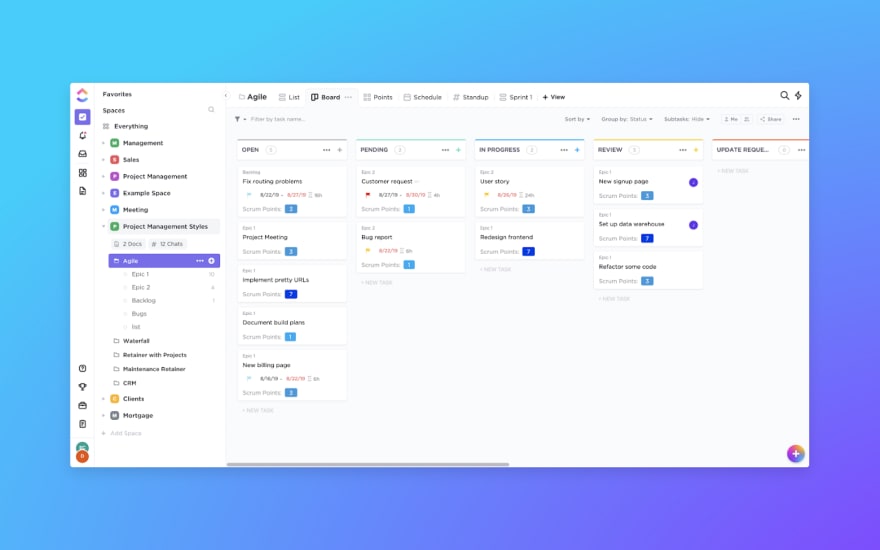
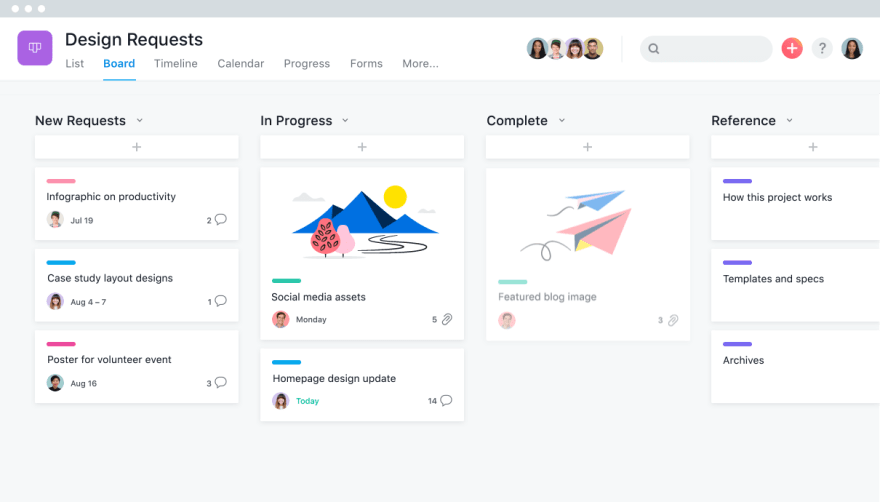
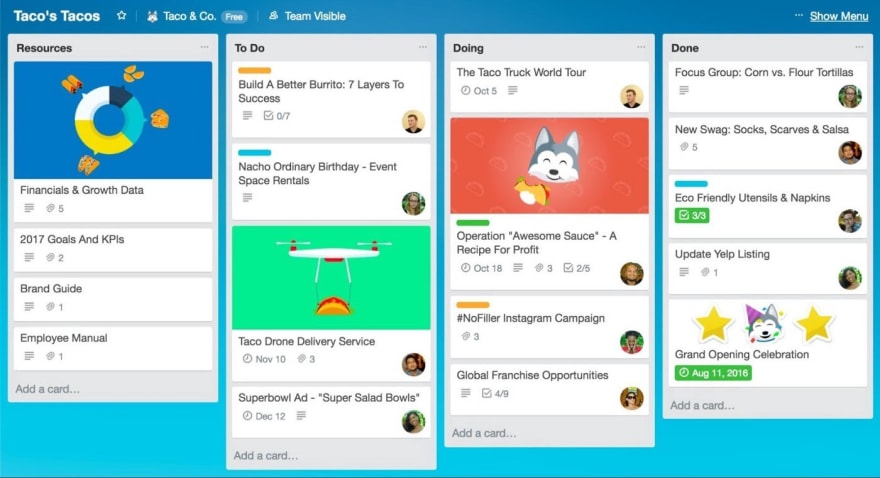
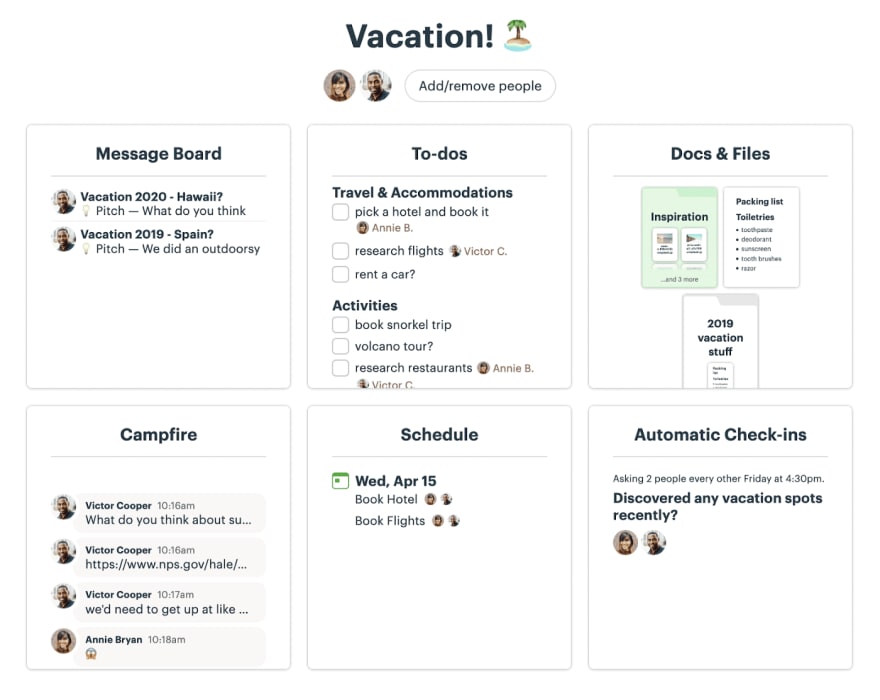
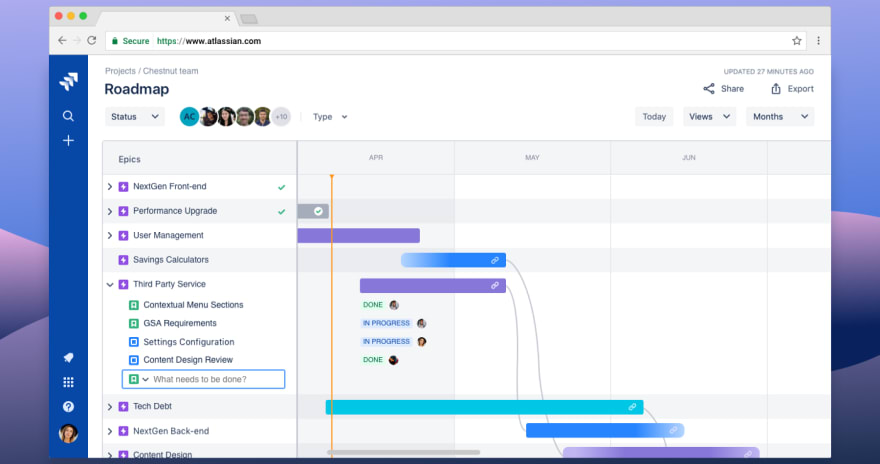

Top comments (4)
This is a bit surprising to me - in my experience I've just seen project managers managing one project.
It makes sense to me that they should manage multiple projects though. How many projects do they manage on average? Have you ever had too many projects to manage at once - what was that like? How many projects were you managing at the time?
In our organization, we typically juggle 2-3 projects at a time. I honestly find it quite refreshing to be working on a couple of projects at the same time. It allows me to see different angles through which I can approach other projects. Sometimes, working on a project all day long can be a bit overwhelming imo.
Thanks for the response, interesting.
You have a typo in your bio btw, "Momchil, Marketing Manager at Codeginat". I think you want to say CodeGiant :D
Thanks for the heads-up, will fix that